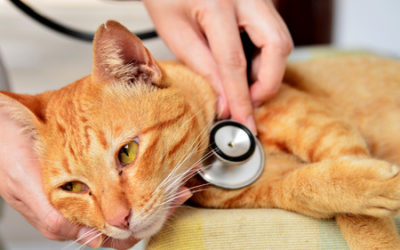Why Spay or Neuter
What’s the Difference?
A female animal is spayed, a male is neutered; in either situation your pet will be sterilized and so they will not be able to reproduce. If you are thinking of breeding your pet you should not have them spayed or neutered.
Appropriate Age
For dogs or cats, both procedures are generally performed around six months of age, however spaying or neutering can be performed as early as 8 to 10 weeks in some situations. Early sterlization is often a good idea in cases of pet adoption.
The Surgical Procedures
These surgeries are done under general anesthesia and both involve a surgical incision into the abdomen. Actual surgery time is generally short, within an hour or less. Complications are extremely rare and pets are typically discharged from the hospital on the same day, usually within a few hours.
Full recovery times are considerably longer and specific procedures must be followed to ensure your pet is comfortable and healing properly.
Females
An ovariohysterectomy is performed on female cats or dogs; this involves the removal of the ovaries and uterus. The length of time varies depending on whether your pet is a dog or cat, her age, and if she is in heat; time frames range from 15 minutes to 1.5 hours.
Males
An orchectomy is performed on male cats or dogs; this procedure removes the testicles and is sometimes referred to as castration. Procedures are typically very quick – less than 5 minutes for a cat and 5 to 20 minutes for a dog, depending on his age and size.
Recovery Time
These surgeries are done under general anesthesia and both involve a surgical incision into the abdomen.
- Anesthia recovery will take approximately 18 to 24 hours
- Total healing time will take from 7 to 10 days
It will be very important to follow certain procedures for your pet to recover as quickly and comfortably as possible. Full instructions are given at the time your pet is discharged, but generally you should:
- Keep your pet quiet and comfortable
- Restrict activity (no running, jumping, playing, etc.)
- Check the incision twice daily
- Have your pet wear a cone
Why Should I Spay or Neuter?
There are many practical benefits to sterlizing your pet, the most common being:
Fewer Unwanted Dogs and Cats
The overpopulation of unwanted animals leads to the destruction of over 13 million dogs and cats each year.
Healthier and Better Behaved Pets
Sterilized pets live longer and have reduced risks of serious disease later in life.
- The risk of testiticular/ovarian cancer is eliminated
- Potential prostate/uterine problems are reduced
- Life spans are increased due to the vast reduction of the need to roam (a major cause of injury and death in both cats and dogs)
Additionally, many behavioral problems in both dogs and cats are eliminated or vastly reduced, resulting in:
- Calmer, cleaner, more affectionate pets
- Better socialization with other animals
Economical and Efficient
Spaying or neutering will almost certainly cost less and require less time than the potential medical costs that can occur in pets that have not been sterilized.
Litters of Puppies or Kittens Are a Big Commitment
New litters of puppies or kittens may seem like a lot of fun, but the reality is much different for most families. The time and financial commitments required should be a major consideration when deciding whether or not to spay/neuter your pet:
Considerable Household Disruption
You’ll be responsible for the mother and litter’s general health and well-being. Basic care will include:
- Providing a comfortable whelping box (for the delivery and early life of the puppies or kittens)
- Attention during delivery, immediate post-delivery, and the first week (including substantial cleaning and monitoring)
- Weaning the animals to solid food (which begins around 3 to 4 weeks of age)
- Additional cleaning tasks (particularly when the animals begin to move out of the whelping box)
- Finding homes for the new animals (most animals will stay with their mother for at least 6 weeks)
Additional Expenses
At the very least you will have the added expense of food and whelping box, but medical expenses can also occur:
- A complicated pregnancy or delivery (generally uncommon, but visits to the vet will be necessary)
- Post-partum health concerns for the mother (including, haemorrhage, mastitis, or eclampsia; all will require visits to the vet)
- Treating internal parasites that puppies and kitten are born with (including roundworms, hookworms, and tapeworms; all must be treated at the vet)
Overpopulation is a Serious Issue
Even if you can manage the financial and time commitments, the reality is that there are just too many unwanted cats and dogs throughout our communities.
In the U.S. about 17 million dogs and cats are turned over to animal shelters. Only one out of every ten animals taken to shelters find a home. This means that over 13.5 million are destroyed. The tragedy is that this is completely unnecessary by spaying or neutering pets.
More From the Blog
The Importance of Wellness Care for Pets
Your pet’s lifespan is relatively short and a lot can happen in a year.
Pet Vaccinations
A sensible and easy way to protect your pet from the most common and serious diseases.
Doggy Daycare
The exercise, socialization, and TLC your pal needs while you’re away.
Pet Grooming
Your pet will love our friendly and experienced groomers.
Pet Diagnostics
Our on-site labs give us accurate results quickly and efficiently.
Your Pet’s Wellness Exam
The basics of an annual wellness exam.






